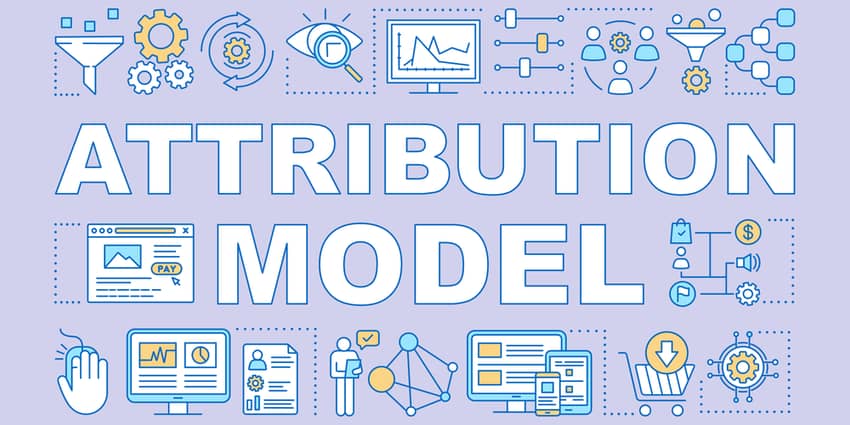On the path to conversion, customers may have multiple interactions with your brand on different channels.
Attribution modelling is a framework which allows you to analyse how much credit you give touchpoints or marketing channels for a conversion.
This can give you a better understanding of how your ads perform and can help you optimise your customer journey.
By assigning credit to your marketing channels and touchpoints, you can increase your chances of converting more potential customers by:
- Identifying areas of the buyer's journey and where you can improve
- Determining the ROI for each touchpoint
- Finding the most effective ways to spend your budget
- Tailoring your content to your unique personas
Types of Attribution Modeling
First-click attribution model
The first-click attribution model gives 100% of the credit to the first touch point, regardless of whether that marketing effort directly influenced the sale or not.
Example: You are on Facebook and you get targeted with an advert for an online course, you click on the advert and read the landing page. You then sign up with your email address and download a free information pack. The online course then sends out a follow up marketing email a few days later with an offer, which you then convert through.
Which channel gets the credit for the conversion? With this attribution model, the Facebook Ad receives complete credit.
This model is good when you're trying to discover the methods that drive most new customers.
Last-click attribution model
This model gives complete credit to the last touchpoint.
Example: You are on instagram and you see an clothing advert, you click on it and it brings you to their landing page, you look through it and then you close the page. A few days later you decide to go back on to the clothing website. You enter their URL and make a purchase.
In this scenario, direct traffic receives the credit for the conversion.
Last non-direct click attribution model
The last non-click attribution model gives conversion credit to the place that the customer clicked last.
Example: Someone clicks on your display ad, but they do not convert. A couple of days later, they type in your website's URL and then they make a purchase. The conversion credit would go to the display ad, not the direct traffic source.
This is a good way of finding out what marketing campaigns trigger conversions without crediting direct traffic too much.
Linear attribution model
This model gives equal credit to all the channels that the buyer clicked on or visited before converting.
After a while of using this model, you'll start to notice certain marketing channels make more conversions than others. You will be able to focus on the channels that are generating more revenue.
Position-based attribution model
In the position based attribution model, 20% credit is assigned to the first and last click and the remaining 20% is distributed evenly to the middle interactions.
Example: the paid and direct channels would each receive 40% credit while social media and email channels would receive 10%.
This attribution model recognises that the first and and last clicks are very important but can undervalue other touchpoints in between.
Data-driven attribution model
This model is also known as a multi-touch attribution model and it uses your conversion data to calculate the actual contribution of each ad interaction throughout the conversion path.
Someone might see a display ad, visit social media then convert through paid search. The data-driven attribution model gives each channel the credit weight it deserves for your end goal.
This means that when you're evaluating data you'll be able to see which channels have the greatest conversions.
Conclusion
Attribution modelling allows you to focus on the buyer's journey and understand which ad campaigns and channels are working best for your customers and which need improvements. You can implement which model you think would suit you best in your Google Analytics, find out how to here.










 Facebook
Facebook Twitter
Twitter Instagram
Instagram Linked In
Linked In YouTube
YouTube